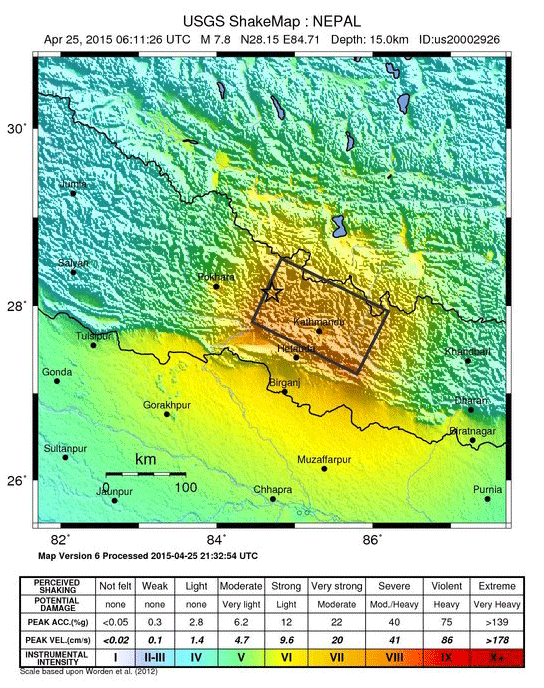2015-04-27
Strong Earthquake in Nepal
Nepal was shaken by an earthquake with a magnitude of 7.8 at 6.11 a.m. (UTC) on Saturday, April 25, 2015. The earthquake occurred approximately 80 kilometers northwest of the capital Kathmandu at a depth of 15 kilometers, and is one of the ten most powerful instrumental recorded in the Himalayas. The last similarly powerful earthquake to hit Nepal occurred over 80 years ago in 1934, with a magnitude of 8.2. The last large earthquake in this region struck Kashmir and Pakistan, with a magnitude of 7.6.
Read more...The Himalayan region has one of the highest levels of seismic activity in the world, and is an area in which large earthquakes often occur. The reason for this is the collision of the Indian and Eurasian Plates, with the Indian Plate moving toward the Eurasian Plate at a rate of almost five centimeters per year. A number of main and auxiliary faults run parallel to the plate edges in an east–west direction. It was along one of these faults that the earthquake on Saturday occurred. According to information gathered so far, the rupture surface covers an area measuring 150 kilometers to the southeast of the epicenter and around 50 kilometers in a north–south direction. The Nepalese capital Kathmandu was right above the rupture surface. To the west of the epicenter toward Pokhara the vibrations were not as strong.
By comparison, in the European Alps, where the Eurasian and African Plates collide, the rate of collision is only between one and four millimeters per year. The strongest earthquakes on record in the Alps registered a magnitude of 7 – around 20 times weaker than the earthquake with a magnitude of 7.8 that struck Nepal.
There have been a number of aftershocks since, some of which have been very strong. The strongest aftershock was approximately as powerful as the earthquake that struck Basel in 1356 – the strongest earthquake ever recorded in Switzerland. Further powerful aftershocks can be expected over the course of the coming weeks. These may cause more destruction, avalanches, and landslides. The aftershocks will continue for a period of months, and a further large earthquake cannot be ruled out completely.
The exact extent of the damage caused is still not known, but the earthquake has already claimed several thousand fatalities.
Additional information on the earthquake can be accessed via the following links:
Tagesschau news report from 26.04.2015 (in German)
